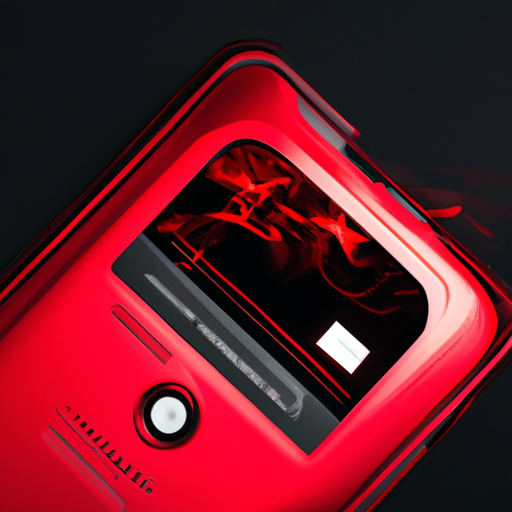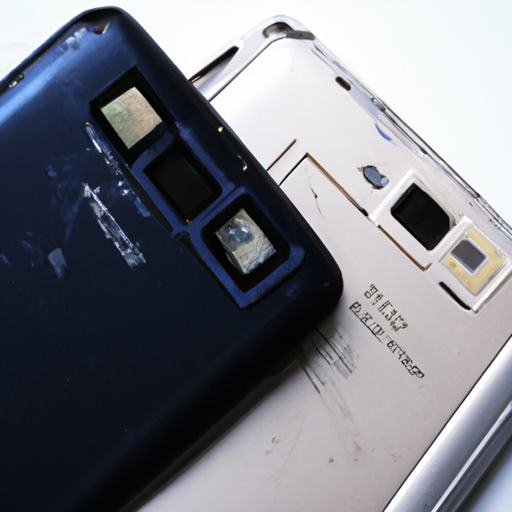“Galaxy S23 Ultra vs. iPhone 14 Pro Max Drop Test!” PhoneBuff is back with another exciting drop test video, sponsored by CASETiFY. In this video, they put the Samsung Galaxy S23 Ultra and the Apple iPhone 14 Pro Max to the test to determine which phone is more durable. The iPhone boasts a flat design and a stainless steel frame that sits flush with the glass, giving it an advantage in terms of drop protection. On the other hand, the Galaxy is the first phone to use Corning’s Gorilla Glass fixes too, which is known to be incredibly strong. To further protect the phones, PhoneBuff tested the new impact case from CASETiFY, which proved to be both thin and highly effective in drop protection. Get ready to find out which phone comes out on top in this epic drop test!
Understanding the Test Subjects
In this drop test, we will be comparing the durability of two flagship smartphones, the Galaxy S23 Ultra and the iPhone 14 Pro Max. Both phones have their unique features and design elements that contribute to their overall durability. By conducting a series of drop tests and analyzing the results, we aim to determine which phone is more resistant to damage.
Features of the Galaxy S23 Ultra
The Galaxy S23 Ultra boasts several features that contribute to its durability. Firstly, it utilizes corning’s Gorilla Glass fixes too, which is known to be the strongest glass produced by Corning. Unlike the iPhone’s ceramic Shield, the Galaxy uses Invictus 2 glass on both the front and back of the phone. This combination of materials is expected to provide better protection against drops and impacts.
Additionally, the Galaxy S23 Ultra features a curved edge design, which not only adds to its aesthetic appeal but also improves its grip. The aluminum frame of the Galaxy is enhanced with armor, making it more resilient to damage compared to previous models. Overall, the design and material composition of the Galaxy S23 Ultra suggest that it is a sturdy and durable device.
Features of the iPhone 14 Pro Max
While the iPhone 14 Pro Max may not have the same curved edge design as the Galaxy, it has its own set of features that contribute to its durability. The iPhone’s frame is made of stainless steel, which is known for its strength and durability. This material choice, combined with the flat design, allows the frame to sit flush with the glass, providing better protection in the event of a drop.
The iPhone also features a ceramic Shield on its front glass, which adds an extra layer of protection. While not as strong as Gorilla Glass fixes too, the ceramic Shield has been praised for its durability. Overall, the iPhone 14 Pro Max’s design and material composition make it a tough competitor in terms of durability.
Comparative Analysis
Now that we have explored the key features of both devices, it is important to conduct a comparative analysis to understand which device is more durable. The drop test will provide insights into how each phone performs in various scenarios.
Physical Attributes
Design elements of Galaxy S23 Ultra
The Galaxy S23 Ultra features a sleek curved edge design that not only enhances its visual appeal but also improves its ergonomics. The larger size of the phone may make it slightly more challenging to handle, but the curved edges help provide a comfortable grip. However, the downside of this design is that the curved edges may be more vulnerable to impact damage.
Structural Design of iPhone 14 Pro Max
On the other hand, the iPhone 14 Pro Max boasts a flat design that offers a more traditional and timeless aesthetic. The absence of curved edges may make it feel less sleek but provides a more solid structure. The flat design also allows the phone to sit flush with its frame, reducing the risk of damage during a drop.
Impact of design on durability
Both design choices have their pros and cons when it comes to durability. While the curved edge design of the Galaxy S23 Ultra provides a better grip, it may increase the vulnerability of the phone’s edges during a drop. On the other hand, the flat design of the iPhone 14 Pro Max may make it less prone to damage, but it may not offer the same level of grip as the Galaxy.
Ultimately, the durability of each device will depend on the materials used and the overall build quality. The drop test will shed light on how these design elements impact the devices’ ability to withstand drops and impacts.
Material Composition
Materials used in Galaxy S23 Ultra
The Galaxy S23 Ultra utilizes a combination of materials to enhance its durability. It features Gorilla Glass fixes too on both the front and back, which is known for its strength and resistance to scratches. The aluminum frame of the Galaxy is reinforced with armor, making it more sturdy and impact-resistant compared to previous models.
Materials employed in iPhone 14 Pro Max
The iPhone 14 Pro Max also incorporates high-quality materials to improve its durability. It features a stainless steel frame, which is renowned for its strength and ability to withstand impacts. The front glass of the iPhone is protected by a ceramic Shield, which provides an additional layer of protection against scratches and cracks.
Impact of materials on drop damage
The choice of materials plays a significant role in determining the devices’ ability to withstand drops. Gorilla Glass fixes too used in the Galaxy S23 Ultra, along with its aluminum frame, provide a strong foundation for durability. On the other hand, the stainless steel frame of the iPhone 14 Pro Max, combined with the ceramic Shield, offers a high level of protection.
The drop test will reveal how effectively these materials can withstand impact and whether any weaknesses are exposed during real-world conditions.
Safety Measures
Safety features in Galaxy S23 Ultra
The Galaxy S23 Ultra incorporates various safety measures to enhance its durability and protect its internal components. It may include reinforced corners and shock-absorbent materials to minimize the impact of drops. The implementation of these safety features aims to ensure that the phone remains intact even in the event of accidental drops.
Safety components in iPhone 14 Pro Max
Similarly, the iPhone 14 Pro Max is equipped with safety components to minimize damage caused by drops. These may include reinforced corners, cushioning materials, and shock-absorbing mechanisms. These safety measures are designed to safeguard the internal components of the device and maintain its functionality even after a fall.
Role of safety measures in drop resistance
The presence of safety measures can significantly impact a device’s ability to withstand drops. By absorbing and redistributing the impact force, these measures help protect the internal components from damage. The drop test will assess how effectively the safety measures in each device can prevent damage and ensure durability.
Test Conditions
Understanding the testing environment
The drop test was conducted in a controlled environment to ensure consistent and reliable results. The test environment was free from external variables that could influence the outcome. The devices were dropped from specific heights onto various surfaces to simulate real-life scenarios.
Test protocols followed
Strict test protocols were followed to ensure accurate and fair results. The devices were dropped multiple times from predetermined heights and angles. Each drop was recorded and thoroughly inspected to assess the extent of damage. The entire test was documented to provide transparency and credibility to the results.
Assumption clarifications before the drop test
Before conducting the drop test, certain assumptions were made to establish a baseline for comparison. These assumptions include the devices being in optimal condition without pre-existing damage or weaknesses. It was also assumed that the devices were tested under similar conditions to eliminate any biased results.
Backdrop Test
Drop sequence for backdrop test
In the backdrop test, both devices were dropped from a specified height onto a hard surface. The drop sequence was carefully executed to ensure consistency. The devices were dropped simultaneously, and the impacts were recorded using high-speed cameras to capture the entire event in detail.
Experiences of devices
Both phones experienced some level of damage during the backdrop test. The Galaxy S23 Ultra’s Gorilla Glass fixes too held up well, with only minor cracking at the bottom left and top right corners. The iPhone, however, suffered from significant damage, with its rear glass completely shattered and chunks of glass missing. One of the iPhone’s cameras also suffered a crack on its lens.
Post backdrop test evaluation
Based on the results of the backdrop test, the Galaxy S23 Ultra demonstrated better resilience against damage compared to the iPhone 14 Pro Max. The Galaxy’s Gorilla Glass fixes too remained intact, while the iPhone’s rear glass suffered significant damage. This indicates that the Galaxy may have an edge over the iPhone in terms of durability.
Corner Drop Test
Procedure of corner drop test
The corner drop test aimed to assess the devices’ ability to withstand impact on their corners. Both devices were dropped from a specified height, landing directly on one of their corners. The drops were executed in a controlled manner to ensure consistency.
Fall experiences of devices
In the corner drop test, the Galaxy S23 Ultra endured a deep scuff mark on its aluminum frame, caused by the sharp corner digging into the concrete. On the other hand, the iPhone’s rounded titanium frame remained relatively undamaged, with only minor scratches. However, the iPhone’s rear glass suffered more damage, with chunks of glass missing and revealing the underlying blue color.
Evaluation after corner drop test
Considering the results of the corner drop test, the iPhone 14 Pro Max demonstrated better resistance against damage to its frame compared to the Galaxy S23 Ultra. While both devices experienced damage, the Galaxy’s aluminum frame showed signs of abrasion, whereas the iPhone’s titanium frame appeared to be more resilient. However, the iPhone suffered more damage to its rear glass during the test.
Face Drop Test
Conducting the face drop test
In the face drop test, both devices were dropped face-down from a specified height onto a hard surface. The drops were carefully executed to ensure the phones landed directly on their screens. High-speed cameras were used to capture the impacts in detail.
Devices’ reactions to face drop test
During the face drop test, both devices experienced significant damage. The Galaxy’s glass shattered, particularly on the curved edges. The iPhone sustained damage at the top right corner, with cracks running through the dynamic island, near the TrueDepth sensor. However, both devices’ fingerprint scanners and face ID features remained functional.
Analysis after face drop test
The face drop test revealed that both devices’ screens were susceptible to damage when dropped directly onto a hard surface. However, the iPhone 14 Pro Max sustained slightly less damage overall. The cracks on the Galaxy’s curved edges and the iPhone’s cracked glass indicate that both devices have vulnerabilities in terms of face-down drops.
Bonus: Steel Drop Test
Implementation of the steel drop test
In the bonus round, both devices were dropped directly onto a steel surface from a specified height. The purpose of this test was to assess the devices’ ability to withstand a high-impact drop.
Devices’ response to steel drop test
Despite the high impact, both devices’ screens remained fully functional after the steel drop. However, the iPhone’s rear glass sustained significant damage, with cracks and missing chunks. The Galaxy’s initial cracks held up well, and after a closer inspection, no functional issues were detected.
Post steel drop test analysis
Based on the results of the steel drop test, both devices demonstrated impressive resilience against high-impact drops. While the iPhone’s rear glass suffered more damage, no critical components were affected. Overall, both phones proved to be durable when subjected to such extreme conditions.
Conclusion
Based on the comprehensive drop tests conducted, it is evident that both the Galaxy S23 Ultra and the iPhone 14 Pro Max are built to withstand accidental drops and impacts. However, the test results do showcase differences in their durability.
The Galaxy S23 Ultra showed impressive resilience in terms of its Gorilla Glass fixes too and aluminum frame, withstanding backdrop and corner drops relatively well. However, it did sustain damage to its curved edges during face-down drops. Conversely, the iPhone 14 Pro Max exhibited a sturdy stainless steel frame, which remained largely undamaged during corner drops. Its ceramic Shield also contributed to its ability to withstand drops.
In overall durability, both phones performed admirably, with the slight edge going to the Galaxy S23 Ultra. However, it is important to note that individual experiences may vary depending on the specific circumstances of the drop. It is always recommended to use protective cases and exercise caution to minimize the risk of damage to these expensive devices.










